Your Details
Your Details
|
Reviewed By Andreas Zabczyk
Ancient Roman Gemstone Jewelry
The Roman Empire was vast and filled with various precious materials and resources, which made it possible to produce beautiful, intricate jewelry. Established trade routes and contact with many different cultures throughout Europe, Egypt, North Africa and the Mediterranean enabled Romans to incorporate these styles, designs and gemstones with their own jewelry designs. Their immense wealth enabled the Romans to produce highly ostentatious jewelry, incorporating precious and semi-precious stones obtained from different areas of their empire. This resulted in large, colorful jewelry using precious emeralds, diamonds, rubies and sapphires and the whole range of semi-precious gemstones including garnets, jet, topaz, pearls and amber. 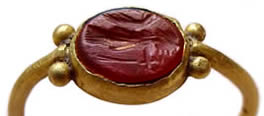
Carnelian ring, circ. 100 BC – 150 AD
Roman men usually wore only a single ring, however, this was not the case in the early first and second centuries when rings were often worn on all ten fingers. These rings were typically worn in front of the knuckle, rather than behind it as rings are worn today. Hence many Roman rings seem too small for modern fingers. The gemstones used were usually cabochons of garnet, purple amethyst or orange carnelian. Historical evidence shows that carnelian, an orange colored form of quartz, was one of the most favored gemstones for the Romans. 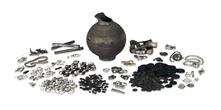
A great example from history of the popularity of orange carnelian gemstones in men's rings was found in the town of Snettisham, which is in Norfolk, England. The discovery was made during building work in 1985. Dating from the second century AD and known as "The Snettisham Jeweller’s Hoard", it consisted of hundreds of finished rings and unmounted carnelian gemstones found inside a narrow-necked Roman pot, possibly hidden by a Roman jeweler in a moment of crisis. The jeweler probably meant to return later and recover it, but for whatever reason, never did. 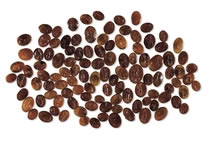
Scrap silver, ingots, a few pieces of scrap gold and a quartz burnishing tool all indicate that this belonged to a real jeweler's workshop, albeit a 2000 year old business. Interestingly, a bracelet made by the jeweler had to be bent to fit inside the jar, and had subsequently broken. Also amongst the stash are 117 engraved carnelian gems, awaiting setting in suitable rings. Some had already been mounted when the jeweler had to hide his stash. Roman rings worn by soldiers and civilians and lost whilst bathing in the warm springs at Bath, England, were also discovered recently. The Romans used a number of different adhesives, some of the most common being resin and bitumen. However, one characteristic that they all had in common was that sooner or later, they tended to fail. It seems that even the great Roman generals, Julius Caesar, Marcus Antonius (Mark Anthony) and Maximus, occasionally threw out the baby with the bath water. 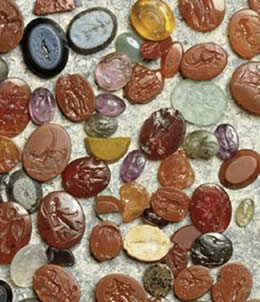
Roman gemstones lost from the rings of soldiers and civilians whilst bathing in the warm springs in Bath, England (right). Mark Antony was very fond of gemstones and often gave them to Cleopatra. On one such famous occasion, he tried to purchase a large and beautiful opal from a Roman Senator called Marcus Nonius. Mark Antony offered a vast fortune for the opal. However, such was the beauty of the opal that Nonius refused and he was given an ultimatum by the furious Mark Anthony; either he sell the ring or leave town! Nonius chose to leave Rome and keep the opal. 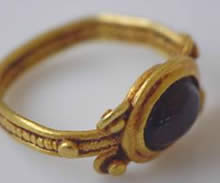
Romans wore rings for many different reasons. These included betrothal, status, decoration and even for sealing and authenticating documents with a unique engraving on a gemstone signet ring. Hence the phrase "seal of approval". The signet ring would hold a gemstone; usually a semi-precious stone, since these were softer and enabled intricate carvings. Carnelian was an excellent choice of stone because hot wax, used for making an imprint of the seal does not stick to carnelian. These carved gemstone rings were called "intaglio" meaning to carve, cut or incise. The gemstones preferred for this purpose were quartz such as chalcedony or onyx. Apart from rings, fibula, were common jewelry items throughout Roman history. A fibula was a decorated clothing accessory resembling a large safety pin that was used as a clothing fastener. The fibula was often embellished with a garnet carving of a female bust (known as a cameo), or a winged victory emblem. 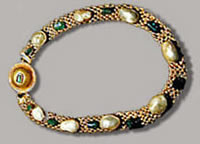
Pearls from the Persian Gulf were a popular gemstone used in ancient Roman jewelry, which were combined with emerald and peridot from Egypt, and carnelian, jasper, lapis lazuli and onyx from Persia. Pearls from the Persian Gulf were favored by ladies to be worn as necklaces and earrings. 
Pearls and emeralds in a Roman gold earring found in Jerusalem, circ. 200 AD. (Left) Whilst Roman men would restrict their jewelry to a single ring and a fibula, Roman women had a choice of jewelry and wore earrings, necklaces, finger and toe rings, brooches and hair pins. A lot of the ladies' jewelry found by archeologists is intricate and beautiful. 
Amber was another favorite gemstone of the Romans who established the "Amber Route" to transport the gems from Gdansk, which had become the center of amber production, to Roman cities throughout the Roman Empire. During Emperor Nero’s reign, an expedition to the Baltic brought back so much amber that an entire gladiator stage was built from it. The Romans valued amber even more than the fair-haired Baltic slaves who harvested it and were also brought back to Rome. Pliny the Elder, a Roman author and philosopher said at the time (23-79 AD) that the price of a small piece of amber sculpture was worth more than a healthy slave. The Roman Empire stretching between 753 BC and 476 AD, demonstrated how to use precious and semi-precious gems to make beautiful jewelry, however, they were not the only ancient civilization to do this. The Greeks and Egyptians also used natural gems to make wonderful jewelry.
We hope you've found this article interesting. Why not email us with your thoughts or any questions? We always like to hear from our customers. |
